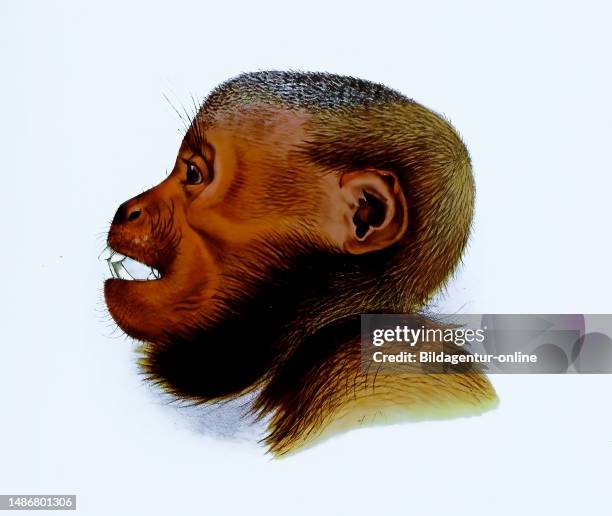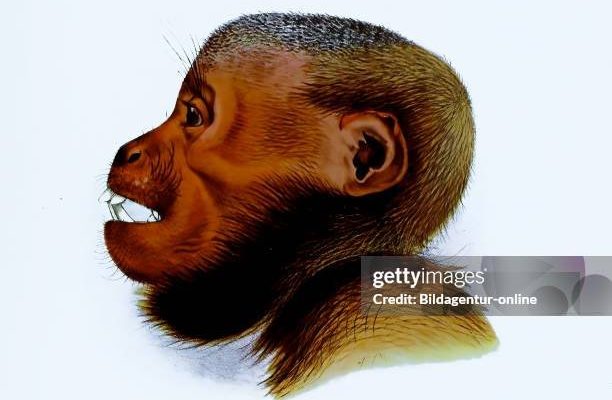
Let’s take a moment to think about them as like tiny acrobats of the forest. With their long limbs and bushy tails, saki monkeys are perfectly crafted for life in the treetops of South America. There are different species, but despite their variations, they share common traits and a lineage that speaks to resilience and adaptability. How did they get to where they are today? Buckle up—it’s time to dive into the evolutionary history of the saki monkey.
What Are Saki Monkeys?
Saki monkeys belong to the family Pitheciidae, which also includes other intriguing primates like titis and uakaris. They are mostly found in the tropical rainforests of Brazil, Suriname, and Guyana. You might be wondering why they’re called “saki.” The name is likely derived from a local term, possibly referring to their striking appearance and playful behaviors.
These monkeys are known for their unique look: fluffy fur, round faces, and a small nose. There are several species of saki monkeys, including the brown saki and the white-faced saki. Each species has its distinctive features, but all saki monkeys are generally around the same size—about the size of a housecat. What’s charming about them is their social nature; they often travel in groups, swinging and playing among the branches.
A Quick Glimpse into Their Evolution
Saki monkeys have a rich evolutionary history that dates back millions of years. They belong to a group of primates known as platyrrhines, which means “flat-nosed” in Greek. This group diverged from their ancestral lines around 35 million years ago, a time when South America was an isolated landmass. Imagine them as pioneers of the jungle, adapting to their environment in unique ways that make them stand out.
The ancestors of today’s saki monkeys likely migrated from Africa as the continents shifted. Over time, these primates evolved distinct characteristics. For instance, their strong limbs and grasping tails help them swing effortlessly between the branches. The environment played a significant role in shaping their diets, behavior, and social structures. As fruits and leaves became more abundant, saki monkeys adapted their feeding habits, learning to crack open tough seeds with their powerful jaws.
The Different Species of Saki Monkeys
When we talk about saki monkeys, it’s essential to recognize the diversity within the group. There are about six recognized species, each with its unique traits and behaviors. Here’s a quick overview:
- Brown Saki (Pithecia pithecia): These monkeys have a thick coat of brown fur and are known for their playful antics.
- White-faced Saki (Pithecia albicans): Easy to spot, they have a white face and are often the stars of the social groups.
- Red Saki (Pithecia rubra): With vibrant red fur, they’re a sight to behold in the green canopies.
- Pale Saki (Pithecia monachus): These monkeys have a lighter-colored coat and can often be found in the company of other primate species.
- Black Saki (Chiropotes satanas): Characterized by their darker fur, they are somewhat larger and have a more robust build.
- Bearded Saki (Chiropotes utahickae): Known for their distinctive beard-like fur, they have a more elongated face.
Each species has adapted to its specific habitat, reflecting their evolutionary journey. Their social structures and mating behaviors can also differ, showcasing a range of strategies that help them survive and thrive in their environments.
Saki Monkey Behavior and Social Structure
Saki monkeys are fascinating not just for their appearance but also for their behaviors. They are primarily frugivorous, which means they eat a lot of fruits, but they also enjoy nuts and seeds. Their strong teeth are adapted to tackle tough shells, making them expert foragers in the forest.
Socially, saki monkeys often live in small groups called troops. Within these troops, they display complex interactions, from grooming each other to playing and communicating through various vocalizations. Their social dynamics are similar to a close-knit family, where bonds are strengthened through shared activities. They engage in playful wrestling and chasing, which not only help with social cohesion but also keep them physically fit for their arboreal lifestyle.
Here’s the thing: their social structure varies between species. For example, some saki monkeys are more solitary, while others thrive in larger, more cooperative groups. This flexibility in social behavior is a result of their evolutionary adaptations—different strategies for survival.
Threats and Conservation Efforts
Despite their charming appearances and social behaviors, saki monkeys face numerous threats in the wild. Habitat loss due to logging, agriculture, and urban development is one of the biggest challenges they encounter. As their forest homes shrink, the monkeys struggle to find food and safe places to live.
Moreover, hunting for bushmeat and the illegal pet trade further puts pressure on their populations. You might be thinking, “What can be done to help them?” Thankfully, several conservation efforts are underway. Organizations are working to preserve their natural habitats through sustainable land-use practices and reforestation initiatives.
Additionally, raising awareness about the importance of biodiversity and the role of saki monkeys in their ecosystems is crucial. Protecting these adorable creatures means preserving the rich tapestry of life in the rainforest, which benefits not just the monkeys but the entire environment.
The Future of Saki Monkeys
The future of saki monkeys largely hinges on our choices today. As we learn more about their evolutionary history and ecological roles, we can better understand the importance of protecting their habitats. Initiatives that promote ecotourism can also create a sustainable income for local communities, encouraging them to protect rather than exploit their natural resources.
Research continues to play a vital role. Studying their behaviors and genetics helps scientists understand how they adapt and survive. This knowledge can inform better conservation strategies and foster a greater appreciation for these unique primates.
Saki monkeys are not just fascinating animals; they’re a reminder of how interconnected we all are. By supporting efforts to protect them, we’re also helping to conserve the lush rainforests that sustain countless species, including our own.
The evolutionary history of the saki monkey is a captivating tale of adaptation, survival, and community. From their origins millions of years ago to their current status in the wild, these monkeys embody the diversity and resilience of life. So the next time you see a saki monkey, remember that behind those playful eyes lies a rich history shaped by time and environment.
Ultimately, the story of the saki monkey is deeply intertwined with our responsibility to protect them and their home. By understanding their journey, we can appreciate not just these delightful creatures but the broader story of life on Earth. Let’s make sure that future generations can enjoy the sight of these remarkable monkeys swinging through the trees, just as they have for countless years.

